As an organic filler for plastics, wood flour has many excellent properties that other inorganic fillers cannot match; it has a wide range of sources, low price, low density, good insulation, and less wear and tear on processing equipment.
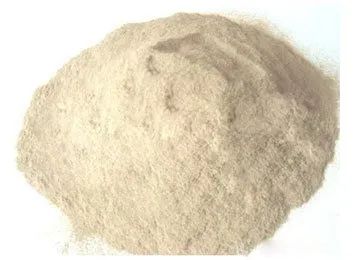
However, it has not been widely used like inorganic fillers, mainly due to poor compatibility with matrix resin, poor dispersion effect in molten thermoplastics, poor fluidity, and difficulty in extrusion molding.
Since the main component of wood flour is cellulose, which contains a large number of hydroxyl groups, these hydroxyl groups form intermolecular hydrogen bonds or intramolecular hydrogen bonds, making wood flour water-absorbent, with a moisture absorption rate of 8% to 12%, and extremely Strong; while most thermoplastics are non-polar and hydrophobic, so the compatibility between the two is poor, and the bonding force at the interface is very small.
Therefore, it is necessary to obtain plastic-wood composite materials with excellent performance and conditions.
The first thing to solve is the problem of material compatibility. The compatibility problem is mainly solved by adding various modifiers.
Why does the performance of the composite material improve after using various modifiers? What changes have occurred at the interface between the non-polar matrix resin and the polar wood flour due to the use of modifiers?
We try to get an answer to this question by analyzing the scanning electron microscope (SEM) pictures of the impact fracture of the composite material. The composite materials obtained by directly mixing wood flour (60 mesh) with HDPE without using any modifier and the composite materials prepared by treating wood flour with 1.5% silane coupling agent were selected, and 6 parts of PE-g- MAH and EVA-g-MAH modified composites were subjected to impact fracture morphology analysis.
The picture shows the normal temperature impact fracture morphology of HDPE/wood powder composite material
(Note: a is unmodified; b is silane coupling agent; c is PE-g-MAH modification; d is EVA-g-MAH modification)
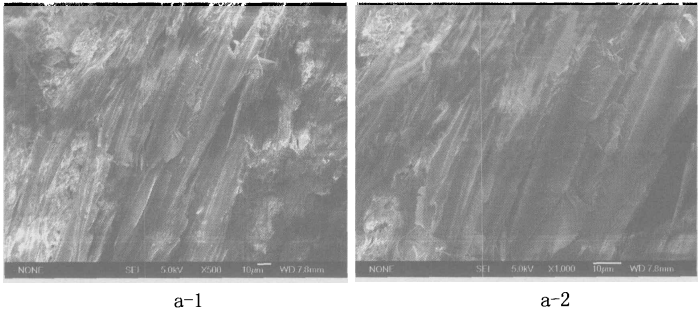
As shown in the figure: From photos a-1 and a-2, we can clearly see that the interface between the composite material HDPE and wood flour without any modifier is very smooth and tidy after peeling off, which shows that the interface between wood flour and HDPE two phases The compatibility is very poor, and the interface adhesion between the two is very small. Therefore, when the material is subjected to an external force, the interface layer cannot form an effective force transmission and the wood powder and the matrix resin are easily peeled off.
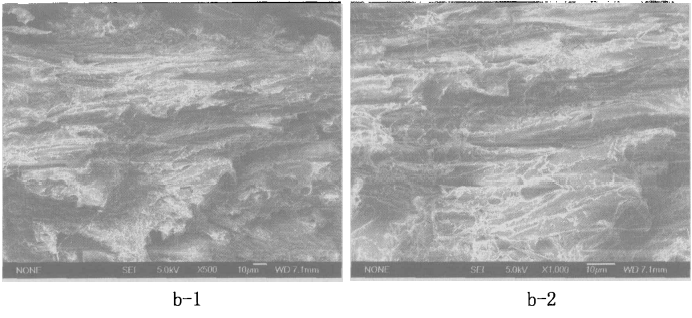
From photos b-1 and b-2, it can be seen that the impact fracture morphology of the composite material prepared after using 1.5% silane coupling agent to treat wood flour has changed greatly, and the surface is no longer like that before unmodified So smooth, there are many fibrous substances attached to the surface. This is due to the deformation of the matrix resin during the fracture process, indicating that an effective interfacial layer is formed between the wood powder modified by the coupling agent and HDPE, which enhances the interfacial bonding between the wood powder and the HDPE matrix. A strong force is required to destroy the interface between wood flour and HDPE.
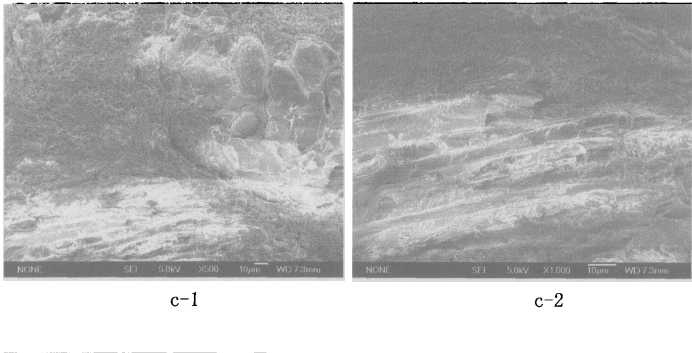
Photos c-1 and c-2 show the impact fracture morphology of wood-plastic composites prepared by using 6 parts of PE-g-MAH as a compatibilizer, and the surface is not as smooth and flat as before the addition. , indicating that the use of PE-g-MAH also enhanced the compatibility of the composite interface and improved the affinity between HDPE and wood flour surface.
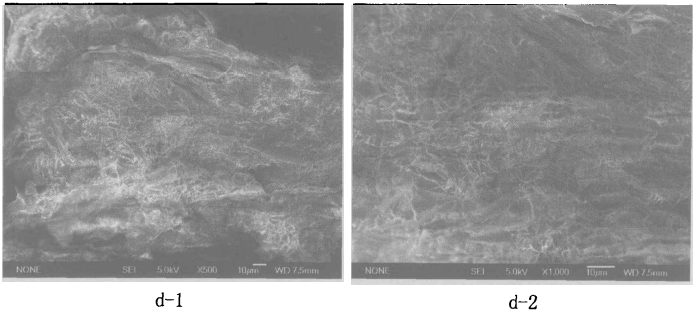
Photos d-1 and d-2 are the impact fracture morphology of composite materials prepared by adding 6 parts of EVA-g-MAH as compatibilizer. It can be seen that some elongated fibrous substances appeared on the fracture surface after fracture, wood The cavity left by the powder and matrix resin peeling has obvious deformation. This is due to the use of EVA-g-MAH to improve the interfacial compatibility of the composites. The wood powder and the matrix resin are peeled off under the action of external force, resulting in the deformation of the matrix resin. After the above analysis and observation, it can be concluded that the wood powder treated with a coupling agent or the use of a compatibilizer can effectively improve the compatibility between the wood powder and HDPE interface, improve the interface adhesion, and thus improve the performance of the composite material. got improved.











